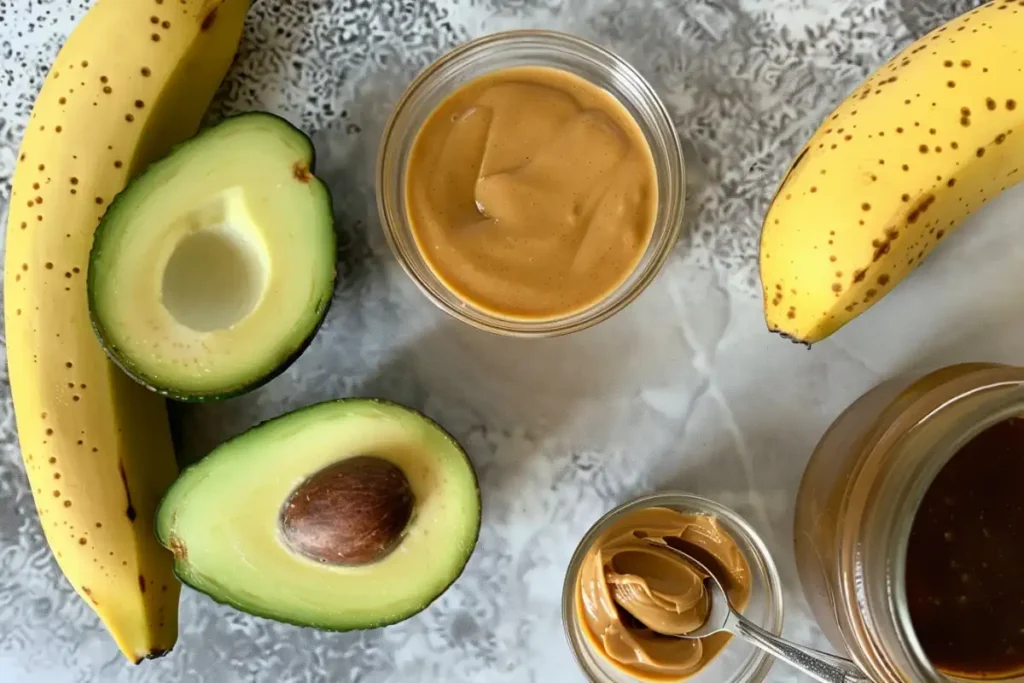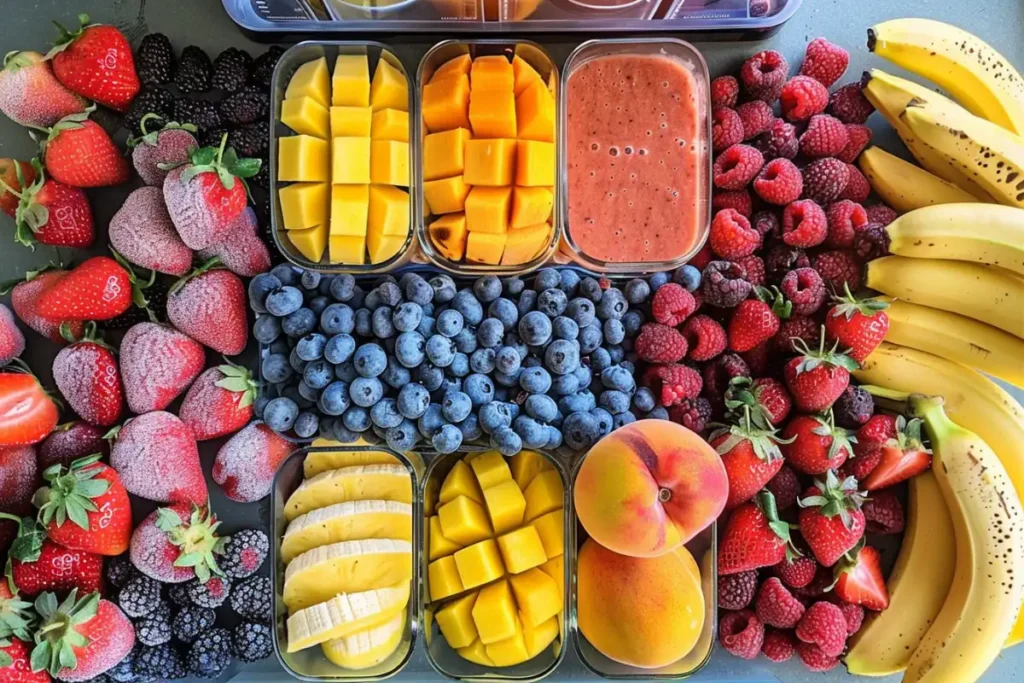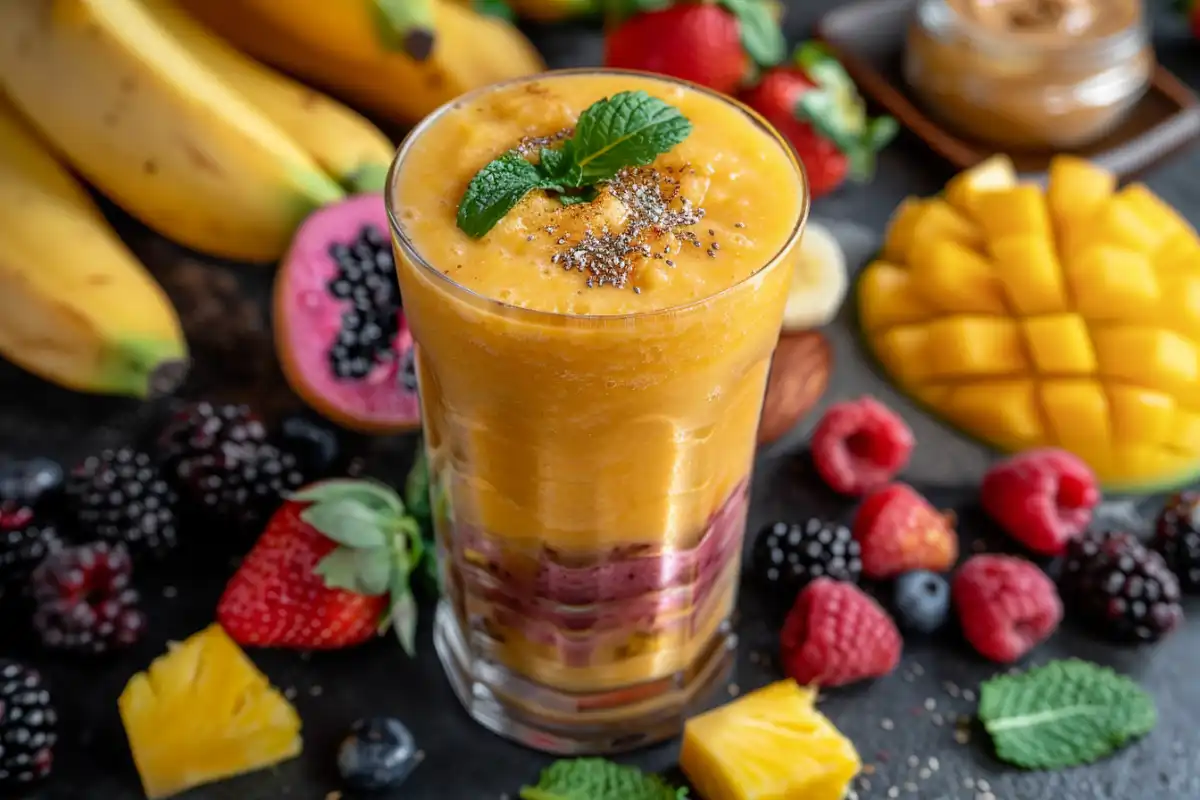Smoothies are the perfect blend of convenience, flavor, and versatility. They can serve as a quick breakfast, post-workout snack, or even a refreshing midday treat. However, many people assume that milk is a necessary ingredient to make a smoothie. Whether you are lactose intolerant, vegan, or simply out of milk, the truth is, there are plenty of alternatives to achieve a creamy and flavorful smoothie without using any milk.
In this guide, we’ll explore the various liquid substitutes for milk, discuss the best fruits to use for smoothies, and show you how to create a thick, creamy texture with other ingredients. We’ll also provide recipe examples and answer common questions about how to make the perfect smoothie without using milk. Along the way, we’ll link to some additional helpful recipes and ideas, ensuring you can build a delicious milk-free smoothie, no matter the ingredients you have on hand.
Why You Don’t Need Milk for a Great Smoothie
Many smoothie enthusiasts believe that milk is essential for creating a rich and creamy texture. However, milk is far from being the only option. In fact, leaving out milk can enhance the flavor of the fruits and other ingredients. Using other liquids like water or juice gives the natural sweetness of the fruits a chance to shine.
Additionally, there are many alternatives that can be used in place of milk to maintain that creamy, thick texture that we all love in smoothies. Ingredients like banana, avocado, yogurt alternatives, and nut butters are perfect for adding richness to your smoothie. And if you’re looking for some inspiration on tropical smoothies, check out this Mango Pineapple Smoothie Recipe to get an idea of how you can create delicious smoothies without dairy.
Now let’s dive into some great alternatives to milk in smoothies.
Liquid Alternatives to Milk in Smoothies
If you’re out of milk or want to avoid it, there are many other liquid options that work just as well, if not better. Here’s a list of excellent substitutes for milk in smoothies.

1. Water
Water is the simplest and most readily available alternative to milk in a smoothie. Although it may not add any flavor, it helps to dilute the fruit and creates a refreshing, hydrating drink. Water is especially ideal if you’re using high-water-content fruits such as watermelon or cucumber.
While some might think water makes a smoothie too thin, you can control the amount of liquid to maintain the thickness you want. Start with a small amount and gradually add more until you reach the desired consistency.
2. Coconut Water
If you’re looking for a flavorful, tropical base for your smoothie, coconut water is an excellent option. It adds a subtle sweetness and light coconut flavor without overwhelming the taste of the fruits. Coconut water works exceptionally well with tropical fruits like pineapple and mango.
Try using coconut water in a refreshing Mango Pineapple Smoothie to experience a tropical, dairy-free delight. Coconut water is a fantastic option when you’re craving a light and hydrating drink.
3. Fruit Juices
Fruit juice is another great alternative to milk in smoothies. It adds flavor, natural sweetness, and a smooth texture. Popular choices include orange juice, pineapple juice, or even apple juice. These juices can help elevate the flavor of the fruits in your smoothie and create a vibrant drink.
When using fruit juice, be sure to choose juices without added sugars. The natural sweetness of the fruit juice will complement the smoothie without overwhelming it with extra sugar. You can also dilute the juice with water if you prefer a less sweet taste.
4. Herbal Teas
An often overlooked but delightful option is herbal tea. Teas such as green tea, chamomile, or even peppermint tea can be brewed and chilled to use as a smoothie base. Herbal teas add a subtle hint of flavor that pairs well with a variety of fruits and give your smoothie a unique twist.
For example, using green tea as a base works exceptionally well in berry-based smoothies or with peaches. Not only does it provide flavor, but it also adds depth to your smoothie. Pair this with tropical fruits like mango or berries for a refreshing blend.
5. Plant-Based Milks
For those who prefer a creamy consistency similar to regular milk but want to avoid dairy, plant-based milks like almond milk, oat milk, soy milk, and coconut milk are great alternatives. Each of these options offers a unique flavor profile and texture.
- Almond milk has a light, nutty flavor and works well with berries or chocolate smoothies.
- Oat milk is creamy and pairs wonderfully with bananas or peaches.
- Coconut milk adds richness and a tropical flavor, perfect for smoothies with tropical fruits like mango or pineapple.
- Soy milk has a slightly thicker texture and is a good all-around choice for any type of smoothie.
Creamy Add-Ins to Replace Milk
While liquid alternatives help blend the smoothie, the creaminess and thickness are often achieved with other ingredients. Here are some of the best creamy add-ins that can replace milk in smoothies:

1. Banana
Bananas are one of the best natural thickeners for smoothies. When blended, bananas create a thick, creamy texture that makes your smoothie rich without needing milk. Bananas also add a natural sweetness that can balance out stronger flavors from other ingredients, making them a staple in milk-free smoothies.
Bananas are incredibly versatile and work well with a variety of fruits, especially in classic combinations like strawberry-banana or peanut butter-banana. Try pairing banana with a nut butter for a smoothie that’s both rich and filling.
2. Avocado
If you’re looking for something a bit richer, avocado is the perfect option. Avocado blends smoothly into any fruit or vegetable mix, providing a creamy texture without overpowering the other flavors. The subtle flavor of avocado works especially well in green smoothies or with tropical fruits like mango and pineapple.
Adding avocado also makes your smoothie feel more indulgent, even without using any dairy. It’s particularly good when paired with coconut water or juice for an extra refreshing combination.For more tips on using avocado in smoothies, check out this guide to avocado for creamy smoothies.
3. Nut Butters
Nut butters such as peanut butter, almond butter, or cashew butter can add creaminess and richness to a smoothie. They pair exceptionally well with fruits like bananas, berries, or apples, and add a satisfying nutty flavor.
For a dessert-like smoothie, try blending almond butter with bananas and oat milk. It’s smooth, rich, and completely dairy-free. Nut butters are also a great way to add extra protein and make the smoothie more filling.If you want to explore using pistachio butter in smoothies, here’s a helpful guide on pistachio butter.
4. Yogurt Alternatives
If you prefer the tangy, thick texture of yogurt in your smoothie, you can easily substitute dairy yogurt with plant-based yogurt alternatives. Coconut yogurt, almond yogurt, and soy yogurt are excellent options for keeping your smoothie thick while maintaining a dairy-free profile.
These yogurt alternatives add richness without overpowering the flavor of the fruits. They work well in berry smoothies or with tropical fruits, and can easily be combined with other creamy ingredients like banana or avocado for an extra smooth texture.
For more ideas on yogurt alternatives and non-dairy smoothie options, check out this resource on dairy-free smoothies.
5. Silken Tofu
Although not a typical smoothie ingredient, silken tofu is a fantastic milk replacement if you’re looking for a creamy texture. Silken tofu blends smoothly into smoothies and adds protein and thickness, making it perfect for a protein-packed smoothie.
Best Fruits for Smoothies Without Milk
Choosing the right fruits is key when you’re making a smoothie without milk. Here are some fruits that blend beautifully into milk-free smoothies.

1. Berries
Berries such as strawberries, blueberries, raspberries, and blackberries are some of the best fruits to use in smoothies. They blend smoothly and add natural sweetness. Berries pair well with almost any base, including water, juice, or plant-based milk.
For a simple, no-milk smoothie, combine frozen berries with water or herbal tea for a refreshing and light drink.
2. Tropical Fruits
Tropical fruits like pineapple, mango, and papaya are perfect for making creamy, flavorful smoothies. These fruits are naturally sweet and juicy, making them ideal for blending with coconut water or juice. For a refreshing tropical smoothie, try combining mango and pineapple with coconut water as a base.
For inspiration, take a look at this Mango Pineapple Smoothie, which highlights the delicious pairing of tropical fruits in a dairy-free drink.
3. Stone Fruits
Stone fruits such as peaches, nectarines, and cherries add a delicate sweetness to your smoothie. Their soft texture makes them blend smoothly with water, juice, or almond milk for a light, flavorful smoothie. Peaches, in particular, are fantastic when combined with oat milk for a creamy, dairy-free treat.
4. Melons
Melons like watermelon, cantaloupe, and honeydew are high in water content, which makes them great for hydrating smoothies. These fruits blend well with water or herbal tea and can be paired with mint or citrus for a refreshing twist.
Smoothie Boosters and Add-Ins
To make your smoothie even more nutritious and flavorful, consider adding some of these boosters:
1. Protein Powders
If you’re looking for a more filling smoothie, try adding protein powder. Plant-based protein powders such as pea protein or hemp protein are excellent dairy-free options that blend smoothly with any fruit.
2. Seeds and Grains
Chia seeds, flaxseeds, and oats add texture and fiber to your smoothie. Chia seeds, in particular, act as natural thickeners, giving your smoothie a pudding-like consistency if left to sit for a few minutes.
3. Sweeteners
If your fruits aren’t quite sweet enough, you can add natural sweeteners like honey, maple syrup, or agave. These sweeteners can enhance the flavor of your smoothie without overpowering it.
4. Ice or Frozen Fruits
Instead of milk, you can use ice cubes or frozen fruits to thicken your smoothie. Frozen fruits like berries or mango help make the smoothie cold and creamy without the need for dairy.If you’re unsure how to properly freeze fruits for smoothies, check out this guide to freezing fresh fruits for smoothies.
Recipes for Smoothies Without Milk
Here are a few simple, milk-free smoothie recipes to try:
1. Berry Banana Smoothie
Ingredients:
- 1 cup mixed berries (fresh or frozen)
- 1 banana
- 1/2 cup water or juice
- 1 tablespoon chia seeds (optional)
Instructions:
- Blend all ingredients until smooth.
- Adjust consistency by adding more water or juice as needed.
2. Tropical Mango Pineapple Smoothie
Ingredients:
- 1/2 cup mango (fresh or frozen)
- 1/2 cup pineapple
- 1/2 cup coconut water
- Ice cubes (optional)
Instructions:
- Blend all ingredients until smooth.
- Adjust with more coconut water if needed.
3. Creamy Banana Almond Smoothie
Ingredients:
- 1 banana
- 1 tablespoon almond butter
- 1/2 cup oat milk (or water)
- 1 tablespoon honey (optional)
Instructions:
- Blend all ingredients until smooth.
FAQs
What can I use instead of milk in a smoothie?
- You can use water, coconut water, fruit juice, or plant-based milks like almond milk, oat milk, or coconut milk.
How can I make my smoothie creamy without milk?
- You can use ingredients like bananas, avocados, yogurt alternatives, or nut butters to achieve a creamy texture without milk.
Can I use juice instead of milk in a smoothie?
- Yes, fruit juices like orange, apple, or pineapple juice are excellent alternatives that add flavor and sweetness to your smoothie.
Final Thoughts
You don’t need milk to make a delicious, creamy smoothie. By using alternatives like water, coconut water, or juice, you can create a smoothie that’s refreshing and packed with flavor. Ingredients like bananas, avocados, and nut butters help to maintain that creamy texture without using dairy.
So, the next time you’re out of milk or want to try something new, give these milk-free smoothie options a try. And for more ideas, check out this Street Corn Pasta Salad Recipe for a perfect meal pairing with your smoothie!

